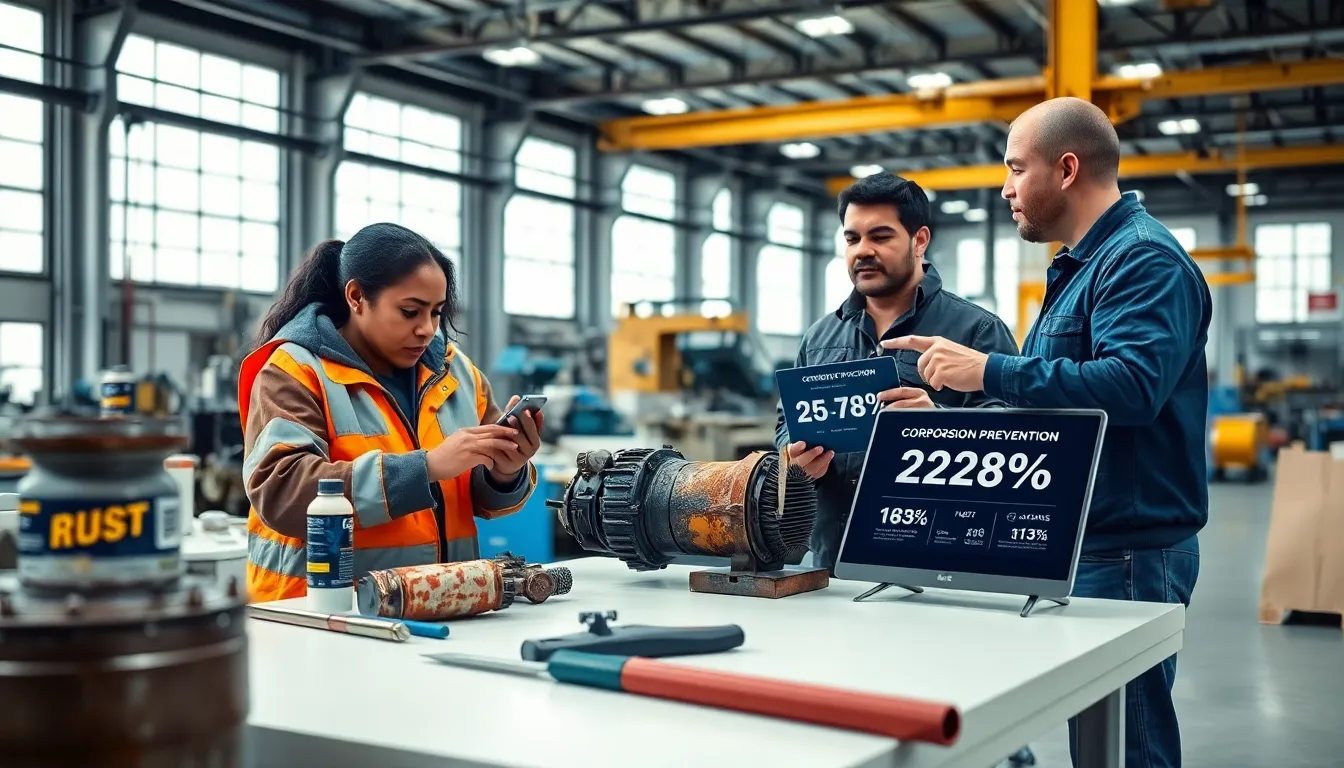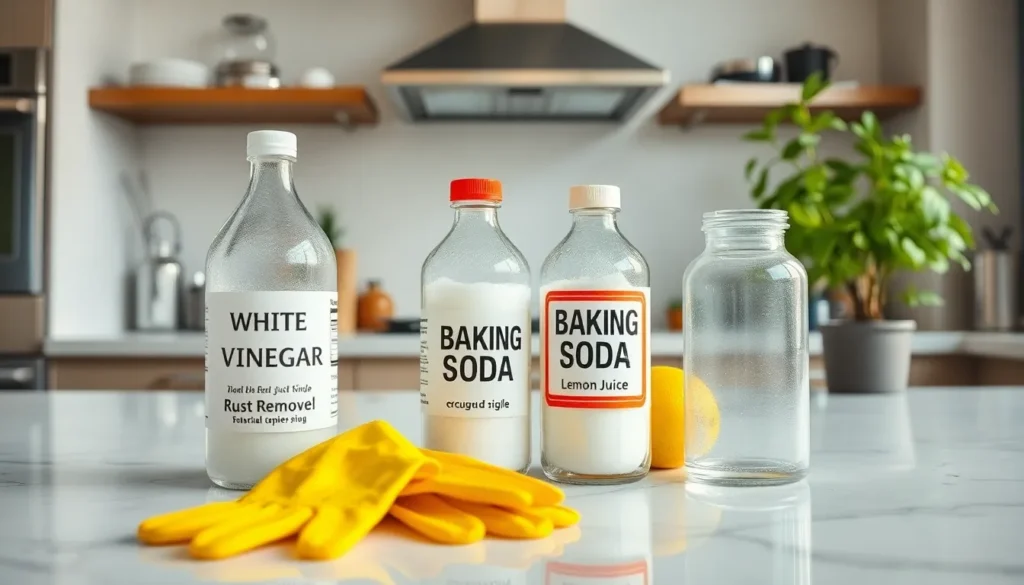Table of Contents
ToggleRust is the nemesis of metal products, lurking quietly until it strikes, transforming once-pristine surfaces into unsightly, flaking messes. But fear not. Anti rust coating is your metal’s best friend, standing guard against corrosion while keeping things looking sharp. In this essential guide, we’ll break down everything you need to know about anti rust coatings. So grab a snack, kick back, and let’s jump into the world of rust prevention with a dash of humor and a whole lot of know-how.
Understanding Rust and Its Impact

Rust is essentially iron oxide, a product of a nasty chemical reaction between iron, moisture, and oxygen. You know, the trifecta of doom for metal surfaces. When rust forms, it not only ruins the aesthetic of your items but also compromises their structural integrity. Think about it, who wants to deal with crumbling tools or corroded vehicle parts?
In industries like automotive, construction, and manufacturing, rust can lead to costly repairs and replacements, not to mention safety concerns. It’s estimated that corrosion costs the U.S. economy billions annually. Hence, understanding rust and its effects is the first step towards prevention.
What Is Anti Rust Coating?
Anti rust coating is a protective layer applied to metal surfaces to prevent rust and corrosion. It acts as a barrier, blocking moisture, oxygen, and other elements that could lead to rust formation. Most coatings come in liquid form and easily adhere to various surfaces, creating a robust shield. Now, while some coatings wear off faster than others, the right choice can make a significant difference in your metal’s lifespan. Essentially, anti rust coating is like a suit of armor for your metals, keeping them shiny and functional.
Types of Anti Rust Coatings
There are several types of anti rust coatings, each catering to different needs and surfaces. Here’s a brief overview of the most common types:
1. Oil-Based Coatings
Oil-based coatings penetrate the surface and provide a durable seal against moisture. They are favored for outdoor equipment due to their longevity in harsh conditions.
2. Water-Based Coatings
These are eco-friendly and easy to apply, making them suitable for indoor and outdoor use. Even though being less durable than oil-based options, they still provide decent protection for everyday items.
3. Galvanization
This method involves coating iron or steel with zinc. The zinc acts as a sacrificial barrier, corroding before the underlying metal does. It’s commonly used for structures like fences and bridges.
4. Epoxy Coatings
Known for their strength and chemical resistance, epoxy coatings are ideal for industrial applications and heavy-duty equipment. They offer exceptional durability and can withstand abrasive conditions.
Choosing the right type depends on the environment and application you need it for.
Benefits of Using Anti Rust Coating
The advantages of anti rust coatings go beyond mere aesthetics. Here’s a look at some key benefits:
1. Extended Lifespan of Metal Products
By providing a protective barrier, anti rust coatings help prolong the life of tools, vehicles, and machinery. No one wants to replace their favorite tools prematurely.
2. Cost-Effectiveness
Investing in anti rust coatings can save significant money in the long run by minimizing rust-related repairs. It’s a smart way to allocate budget resources efficiently.
3. Enhanced Appearance
A good anti rust coating keeps metal surfaces looking good as new. Whether it’s a classic car or outdoor furniture, appearance matters. No one wants rusty eyesores cluttering their space.
4. Safety
In situations where metal failures could lead to accidents (think construction sites), preventing rust is crucial for safety. Anti rust coatings provide peace of mind.
Application Methods for Anti Rust Coating
Applying anti rust coating isn’t just a big splash and hope for the best. There are methods to ensure proper application and effectiveness:
1. Spraying
This is often the most efficient method for larger surfaces. Using a spray gun allows for an even coat, which is crucial for preventing rust evenly.
2. Brushing
Manual brushing is ideal for smaller areas or intricate shapes. It ensures thorough coverage, especially in hard-to-reach places.
3. Dipping
Dipping is a method where items are immersed in a coating solution, providing a thick layer. This method is typical for mass production of smaller items like nails and screws.
Regardless of the method, proper surface preparation is essential. Make sure surfaces are clean, dry, and free from rust before applying any coating.
Choosing the Right Anti Rust Coating for Your Needs
Selecting the right anti rust coating can feel overwhelming, but here are some guides to simplify the decision:
1. Identify the Environment
Consider where you’ll use the coated item. Is it for outdoor use where it’ll face rain and humidity? Or indoor where it’s less exposed to moisture? This will help narrow down your options.
2. Evaluate Durability Needs
If the item is heavy-duty, consider more robust options like epoxy coatings. For lighter, less critical items, a simple oil-based or water-based coating could suffice.
3. Consider Aesthetics
If appearance matters, look for coatings that dry clear or paintable options. You want your items to not just last, but look good doing it.
Maintenance and Longevity of Anti Rust Coatings
Even the best anti rust coatings require some level of maintenance for extended effectiveness. Here are some tips to keep your protected items in top shape:
1. Regular Inspections
Check for signs of wear and tear, especially in high-risk areas. Early detection can prevent bigger problems down the line.
2. Cleaning
Gently clean coated surfaces to remove dirt and grime that can retain moisture. A simple soap and water solution is often sufficient.
3. Reapplication
Over time, coatings may wear off. Make a note of when it might be time to reapply a new layer, ensuring you continue to keep rust at bay.










